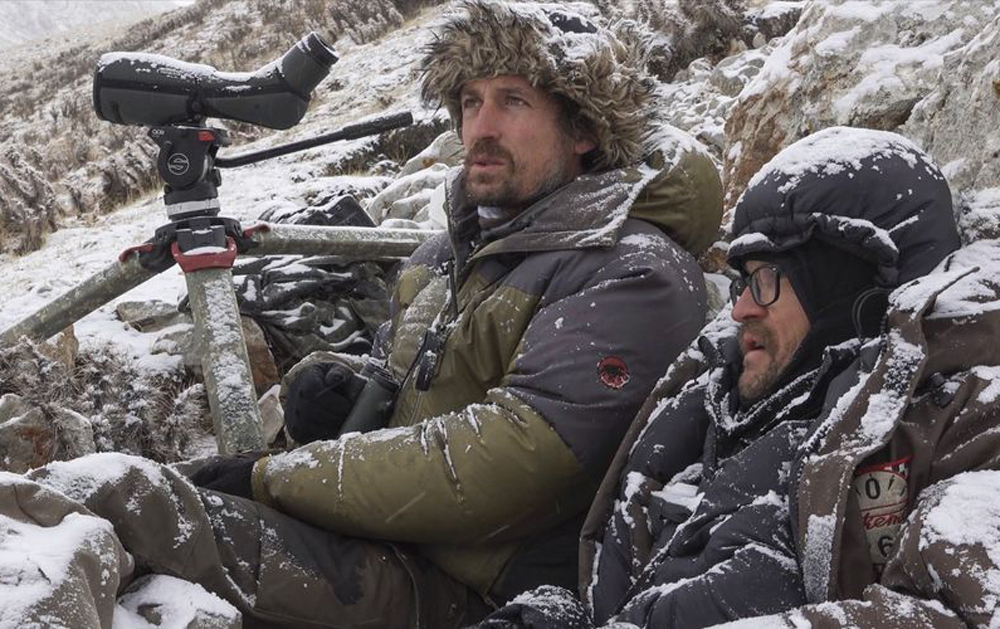For as remarkable as it is that there are filmmakers willing to go where few dare at the farthest reaches of the earth and technology has allowed all to see what they do, there is often a sense of superiority built into nature documentaries, unfolding like a guided tour in which the parameters are clearly laid out by the director with gentle yet firm narration telling audiences what they should be keeping an eye on. Of course, it’s a necessity when few watching will be as knowledgeable about the wildlife as the filmmaker capturing it, but it has also stifled the sense of discovery they themselves must experience when such hand-holding largely limits curiosity. Beyond the breathtaking scenes in the Mekong Valley that director Marie Amiguet collects in “The Velvet Queen,” what’s remarkable in how she pulls back the camera to avoid this issue, following the nature photographer Vincent Munier and writer/cinematographer Sylvain Tesson, credited with coming up with the inspired premise of searching out an elusive snow leopard but documenting their own footsteps in sacred territory as rigorously as the animal.
In spite of treading on land that few have walked before, “The Velvet Queen” may feel as if it’s headed down a familiar path at first, presenting one awe-inspiring image after another of beautiful bharals seemingly defying gravity as they climb up the sides of hills and dust storms that come to overwhelm the valley. Tesson comments on the experience from off-screen, but not as some all-powerful omniscient narrator, rather in a conspiratorial whisper that invites one into the frame with him instead of feeling at arm’s length. As he makes his way on screen, an additional point of interest emerges in Tesson’s relationship to Munier, the veteran world traveler who hasn’t lost his sense of wonder yet clearly has sharpened the focus to do his job properly, making every time Tesson lose his mind over a Tibetan fox or try to engage the photographer in a deeper conversation likely an irritation, though Munier is too composed and professional to ever show it.
The mere suggestion of this tension is enough to make “The Velvet Queen” both an amazing piece of escapism and incredibly relatable as Tesson is apt to throw out one lofty idea after another about the place of humans on earth, constantly comparing the serenity he feels in nature to the chaos he feels in cities, yet Amiguet has the good taste to make this presence equally felt in the film where in spite of his intentions, he remains an intruder. This isn’t to say that Tesson’s insights aren’t valuable or even on occasion profound as he stumbles upon the realization that as much as he may be observing animals, they have their eyes on him as well, putting himself at the same level as any of earth’s creatures and as he and Munier hike up icy mountains and head into dark caves to get a snapshot of the rare leopard, the acceptance of patience as a virtue that nearly all in the wild abide by proves to be as important as any picture they could capture, with Amiguet getting at something even scarcer and more exquisite than what the two men are chasing.
“The Velvet Queen” will be released by Oscilloscope at a later date.




